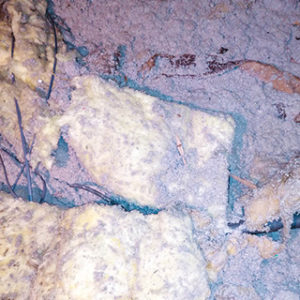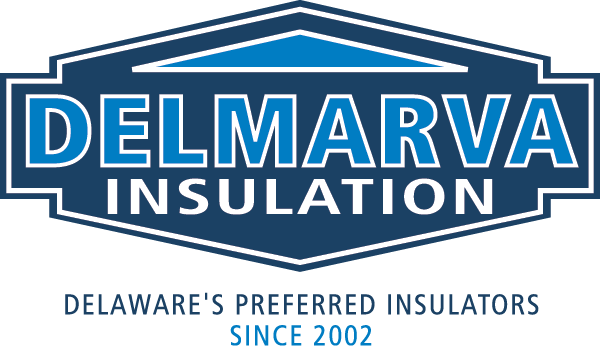Updated June 2024
For many years, asbestos was used in almost everything including floor tiles and insulation. Now, it lurks in many older homes in Delaware, posing serious health risks if disturbed. Learning to spot it before it can become a health hazard is crucial. Misidentifying insulation can lead to DIY disasters or unnecessary panic, making accurate info essential. This guide will empower homeowners with the knowledge to identify asbestos insulation safely and take appropriate action.
The Asbestos Danger: Why It Matters
 Asbestos was a popular building material in the 20th century due to its durability and heat resistance. However, its use in construction has led to severe health hazards. When asbestos fibers are inhaled from the air, over time they can cause serious illnesses including mesothelioma, lung cancer, and asbestosis.
Asbestos was a popular building material in the 20th century due to its durability and heat resistance. However, its use in construction has led to severe health hazards. When asbestos fibers are inhaled from the air, over time they can cause serious illnesses including mesothelioma, lung cancer, and asbestosis.
The Environmental Protection Agency (EPA) and the Agency for Toxic Substances and Disease Registry (ATSDR) provide extensive information on these dangers. Asbestos is now banned in many countries due to its harmful effects, and numerous scientific studies have linked exposure to asbestos with life-threatening diseases. “The Faces of Asbestos Exposure” is a collection of real-life stories of asbestos exposure in everyday people.
Common Types of Asbestos Insulation
Identifying asbestos in your home is the first step to ensuring safety. Here are the common types of insulation containing asbestos that you might find in your home. Please note that Delmarva Insulation does not install insulation that contains asbestos.
Loose Fill Insulation
Often grayish and lightweight, this type can be found in attics. Vermiculite insulation, a specific type of loose fill, often contains asbestos. Be suspicious if it’s old and crumbly.
Pipe Insulation
This insulation is typically found around pipes and may look like a white or gray corrugated paper or a plaster-like material. It can be crumbly and fibrous.
Block Insulation
Typically found on boilers and furnace ducts, this insulation can appear as a hard white or gray block.
Vermiculite Insulation
This granular insulation is often found in attics and walls. It is usually gray-brown and looks like small pebbles. Vermiculite from certain mines, such as the Libby, MT mine that closed in 1990, are known to contain asbestos.
Visit this “Asbestos Insulation Gallery” to view pictures of different types of asbestos insulation.
It’s important to note that not all old insulation contains asbestos. Some materials look similar but are harmless. Loose-fill insulation, for instance, can be made from many different materials that are asbestos-free.
When to Suspect Asbestos
There are countless stories of homeowners who stumble upon insulation that they fear contains asbestos. Here’s a checklist of clues to help identify asbestos in your home:
- House Age: Homes built before the 1980s are more likely to have materials that contain asbestos.
- Insulation Type: Any loose fill, pipe, block, or vermiculite insulation should be carefully checked.
- Condition: Crumbly, damaged, or disturbed insulation is a red flag.
DIY vs. Professional Inspection: What’s Right for You?
It’s never a good idea to disturb materials you suspect contain asbestos and DIY asbestos identification comes with significant risks. It’s always advised to hire a professional asbestos removal/remediation company, especially before major renovations. Trained professionals use specialized equipment to take samples, analyze them, and interpret the results accurately. The cost of professional testing is a worthwhile investment compared to the health risks of incorrect identification.
What to Do If You Find Asbestos
First, if you find asbestos, don’t disturb it. Undisturbed asbestos material in good condition does not usually pose a health threat and can be left alone. Second, know who to call for asbestos removal. If your asbestos is in poor condition, beyond repair or will be disturbed, call a professional. Professional asbestos abatement services follow strict protocols to safely remove asbestos without contaminating your home. Here in Delaware, check out the Department of Natural Resources and Environmental Control’s (DNREC) online pages “Information for Homeowners” and “Asbestos” through Delaware.gov for available local asbestos abatement resources.
Prevention and Protection
If DIY inspection or minor work around materials that contain asbestos is unavoidable, use reputable brands of personal protective equipment (PPE) containing the appropriate mask, gloves, safety goggles, and respirator. However, remember that these measures are limited. Safe asbestos removal practices should be left to professionals to avoid being exposed to asbestos fibers in the air.
Create an Energy Efficient Home with Asbestos-Free Insulation
Asbestos isn’t a DIY project. While knowledge is power, professional help is key when needed. If you are unsure, get an inspection and have your home tested for asbestos. Don’t gamble with your health. By staying informed and seeking professional assistance, you can protect yourself and your family from the dangers of asbestos exposure.
If you find yourself in need of updated, safe insulation for your Delaware home, Delmarva Insulation is the one to call. We’ve been installing asbestos-free insulation and creating energy efficient homes in our Delaware community for decades and we’re here to help you. Contact us today to learn more about the many top quality insulation products and services we offer.



